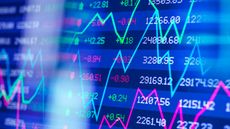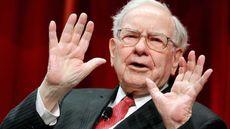Is That You, Bull?
Several of the bears of 2008 now say it's time to buy stocks.

With the broad stock market up 18% from its low on March 9, the bullish case for stocks doesn't seem nearly as outlandish as it did a few weeks ago. But heading into corporate-earnings season, the market is sure to be buffeted by some rank disappointments. And, despite some good housing numbers and the announcement of a new detox plan for bad bank assets, economic setbacks are a given. So the debate continues, rightly so, about whether the current rally represents a new bull market or is just another bear-market rally -- in effect, a head-fake.
Such conversations completely miss the point, according to the bulls. Whether a new low is coming or not, the bigger risk now is being out of the market and missing what might be the best buying opportunity in decades.
| Row 0 - Cell 0 | Time to Say Goodbye to the Bear? |
| Row 1 - Cell 0 | Why We Still Like Stocks |
| Row 2 - Cell 0 | 7 Blue Chips to Hold Forever |
Many investors are understandably reticent -- okay, terrified -- about jumping into stocks. To overcome paralysis, draw up a battle plan and stick to it, says Jeremy Grantham, chief investment officer of GMO, a Boston money-management firm. Once called a "perma-bear," Grantham exhibits a newfound bullishness that is noteworthy. The firm made a "large reinvestment" in stocks in October and another in March, bringing the equity stake in its traditional global balanced portfolio within a few points of the 65% neutral weighting.

Sign up for Kiplinger’s Free E-Newsletters
Profit and prosper with the best of expert advice on investing, taxes, retirement, personal finance and more - straight to your e-mail.
Profit and prosper with the best of expert advice - straight to your e-mail.
GMO isn't guaranteeing we've seen the bottom; in fact, if the pattern plays out the way it has in other post-bubble markets or through bad recessions, stocks could become even cheaper. But what passes for bullishness these days can be summed up in this two-part mantra: Catching the low is impossible, and it's better to be early than too late. "Really cheap markets are capable of doubling really fast," says Ben Inker, GMO's asset-allocation chief. "Just as the money you lose in buying an overpriced asset is lost forever, if you fail to buy a cheap asset when it goes back up, you're not going to get another chance to make that money."
GMO figures that the S&P 500 would be fairly valued at 900 -- up 33% from its low and up another 13% from its close on March 31. Over the next seven years, as the market reverts to more-normalized levels from its oversold, post-bubble extremes, investors can expect annualized returns of 8% to 11%, after inflation, GMO predicts. "On a long-term, buy-and-hold basis, this is the best opportunity that investors have had since 1982," Inker says. GMO favors big, stable blue chips, which have a good shot at surviving hard times in a still-dicey economy. And despite recent rallies, there's no need to rush in all at once. "Put some in every month," says Inker, "and if the market goes back down, speed that up."
Forgive the folks at the Leuthold Group, in Minneapolis, if they feel slightly whipsawed. Leuthold turned bullish last August, clearly early. When the market refused to comply with the firm's rosy outlook, a fail-safe mechanism triggered by mounting losses pushed stock allocations from 63% of assets to 50% on February 23. A March 12 letter to subscribers said stock holdings would not be reduced further, and a few days later, the stake was back up to an aggressive 65% of assets (for Leuthold, 70% counts as fully invested in stocks). "Now is not the time to be cautious toward the stock market," Steve Leuthold wrote in a memo to clients.
His advice to investors who are invested in reputable funds, close to retirement and fretting over sizable losses: Hang in there; you could recover half or more of your 2008-09 losses over the next two years. Leuthold says investors ten years or more from retirement should increase their stock holdings "NOW!"
History provides Leuthold's rationale. Following periods of dismal returns, he notes, the stock market tends to log impressive gains. Through March 6, Standard & Poor's 500-stock index logged an annualized loss of 4.4% (-6% annualized, if you exclude dividends) -- the worst ten-year period in history. When returns have fallen to 1% or less, the subsequent ten-year periods have notched annualized gains of 10.7%, on average. This year alone, Leuthold sees the S&P hitting 1100. That would represent a gain of nearly 38% from the March 31 close and 63% from the March 9 closing low.
It almost doesn't matter what you buy, says Leuthold portfolio manager Jim Floyd: "The trick is to get back into the market." In the bargain-oriented portfolio he manages, he's loading up on stocks that do well in anticipation of an economic rebound: tech, telecom, basic materials, energy, precious metals and homebuilders. The firm also sees opportunity overseas, particularly in Asia (China especially), where there are fewer banking problems, cheaper stocks and faster-growing economies.
Jim Stack, a money manager and publisher of a newsletter called InvesTech Market Analyst, was one of the most vocal bears of 2008. Briefly optimistic at the start of the year, Stack went into hibernation again but suggested in a March 13 letter that the market was approaching the buying opportunity of a lifetime. "Calling the turn in the market is like trying to catch a falling pitchfork -- it can be painful if you miss," says Stack, who operates out of Whitefish, Mont. "That's not the objective. It's to recognize that many of the extremes in the market are at levels -- past levels -- where bear markets bottom."
Stack notes that a March 4 survey by the American Association of Individual Investors found that 70% of investors thought the market was headed lower -- a contrarian indicator that typically heralds a turnaround, and a level surpassing any extreme in the history of the survey.
Other gauges point to bear-market selling so extreme that it's hard to justify. One yardstick compares cumulative price gains over a period of time to cumulative losses. In early March, the Relative Strength Index, as it's known, hit a level not seen since 1932. That represents "oversold extremes," in Stack's view. Looking for a sign that the last of the bulls had capitulated to the bears -- another contrarian indicator -- Stack has found it in the massive outflows from mutual funds and hedge funds as investors abandon the market.
Coming into 2008, Stack had just 45% of the assets he manages in stocks; now he's bumped the allocation to 60%. And given further evidence that the market has bottomed for good-meaning more weeks with no new market lows -- he'll ratchet up that percentage. Stack says he's splitting his purchases between defensive stocks and the economy-sensitive sectors that do well in new bull markets. Among the holdings he's adding to are Intel (symbol INTC), which closed at $15.03 on March 31; Johnson & Johnson (JNJ), which traded at $52.60; and Walgreen (WAG), which fetched $25.96. (Read more about Stack's market outlook.)
Ned Davis Research, in Venice, Fla., is the go-to firm for historical market data. These number crunchers prefer to let the data do the talking, but so far, the market isn't talking in simple, declarative sentences. What it's hinting at, though, is a 2009 bull market, says senior global analyst Ed Clissold. "We're much more constructive on the market than we were," he says.
For most of 2008, the firm kept just 40% of assets in stocks -- the least allowed under its investment parameters. In December, the firm moved to 55% in stocks -- essentially a neutral position -- emphasizing tech, materials and consumer-staple stocks. Clissold says that, given the market's unprecedented volatility, the firm is waiting for more confirmation of an uptrend, even though six out of eight bullish indicators are flashing the green light.
Right now the firm is betting on what it labels a "cyclical" bull market in 2009. That's essentially a shorter bull market within a longer-term bear trend. Such markets last, on average, a little more than a year, logging average gains of 65%. "Later in 2009, the market could be facing trouble again," as debt problems continue to unwind and the economy struggles, says Clissold. "I wouldn't be surprised if another long-term bear market ensued."
Call it whatever kind of bull you like. If it takes the Dow to 10,000-plus, it's nothing to sneeze at.
Get Kiplinger Today newsletter — free
Profit and prosper with the best of Kiplinger's advice on investing, taxes, retirement, personal finance and much more. Delivered daily. Enter your email in the box and click Sign Me Up.

Anne Kates Smith brings Wall Street to Main Street, with decades of experience covering investments and personal finance for real people trying to navigate fast-changing markets, preserve financial security or plan for the future. She oversees the magazine's investing coverage, authors Kiplinger’s biannual stock-market outlooks and writes the "Your Mind and Your Money" column, a take on behavioral finance and how investors can get out of their own way. Smith began her journalism career as a writer and columnist for USA Today. Prior to joining Kiplinger, she was a senior editor at U.S. News & World Report and a contributing columnist for TheStreet. Smith is a graduate of St. John's College in Annapolis, Md., the third-oldest college in America.
-
 Stock Market Today: Stocks Close Mixed Amid War Angst, Nvidia Anxiety
Stock Market Today: Stocks Close Mixed Amid War Angst, Nvidia AnxietyMarkets went into risk-off mode amid rising geopolitical tensions and high anxiety ahead of bellwether Nvidia's earnings report.
By Dan Burrows Published
-
 What the Comcast Cable Spinoff Means for Investors
What the Comcast Cable Spinoff Means for InvestorsComcast has announced plans to spin off select cable networks and digital assets into a separate publicly traded company. Here's what you need to know.
By Joey Solitro Published
-
 Why Is Warren Buffett Selling So Much Stock?
Why Is Warren Buffett Selling So Much Stock?Berkshire Hathaway is dumping equities, hoarding cash and making market participants nervous.
By Dan Burrows Published
-
 Fed Cuts Rates Again: What the Experts Are Saying
Fed Cuts Rates Again: What the Experts Are SayingFederal Reserve The central bank continued to ease, but a new administration in Washington clouds the outlook for future policy moves.
By Dan Burrows Published
-
 If You'd Put $1,000 Into Google Stock 20 Years Ago, Here's What You'd Have Today
If You'd Put $1,000 Into Google Stock 20 Years Ago, Here's What You'd Have TodayGoogle parent Alphabet has been a market-beating machine for ages.
By Dan Burrows Published
-
 Fed Goes Big With First Rate Cut: What the Experts Are Saying
Fed Goes Big With First Rate Cut: What the Experts Are SayingFederal Reserve A slowing labor market prompted the Fed to start with a jumbo-sized reduction to borrowing costs.
By Dan Burrows Published
-
 Stock Market Today: Stocks Retreat Ahead of Nvidia Earnings
Stock Market Today: Stocks Retreat Ahead of Nvidia EarningsMarkets lost ground on light volume Wednesday as traders keyed on AI bellwether Nvidia earnings after the close.
By Dan Burrows Published
-
 Stock Market Today: Stocks Edge Higher With Nvidia Earnings in Focus
Stock Market Today: Stocks Edge Higher With Nvidia Earnings in FocusNvidia stock gained ground ahead of tomorrow's after-the-close earnings event, while Super Micro Computer got hit by a short seller report.
By Karee Venema Published
-
 Stock Market Today: Dow Hits New Record Closing High
Stock Market Today: Dow Hits New Record Closing HighThe Nasdaq Composite and S&P 500 finished in the red as semiconductor stocks struggled.
By Karee Venema Published
-
 Stock Market Today: Stocks Pop After Powell's Jackson Hole Speech
Stock Market Today: Stocks Pop After Powell's Jackson Hole SpeechFed Chair Powell's Jackson Hole speech struck a dovish tone which sent stocks soaring Friday.
By Karee Venema Published